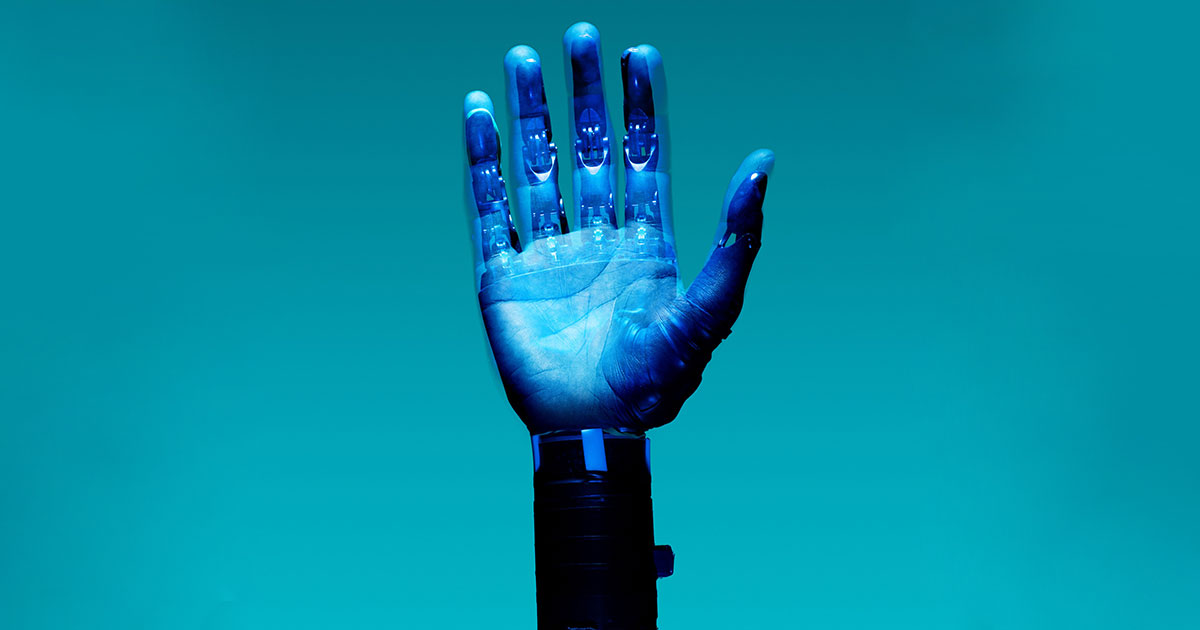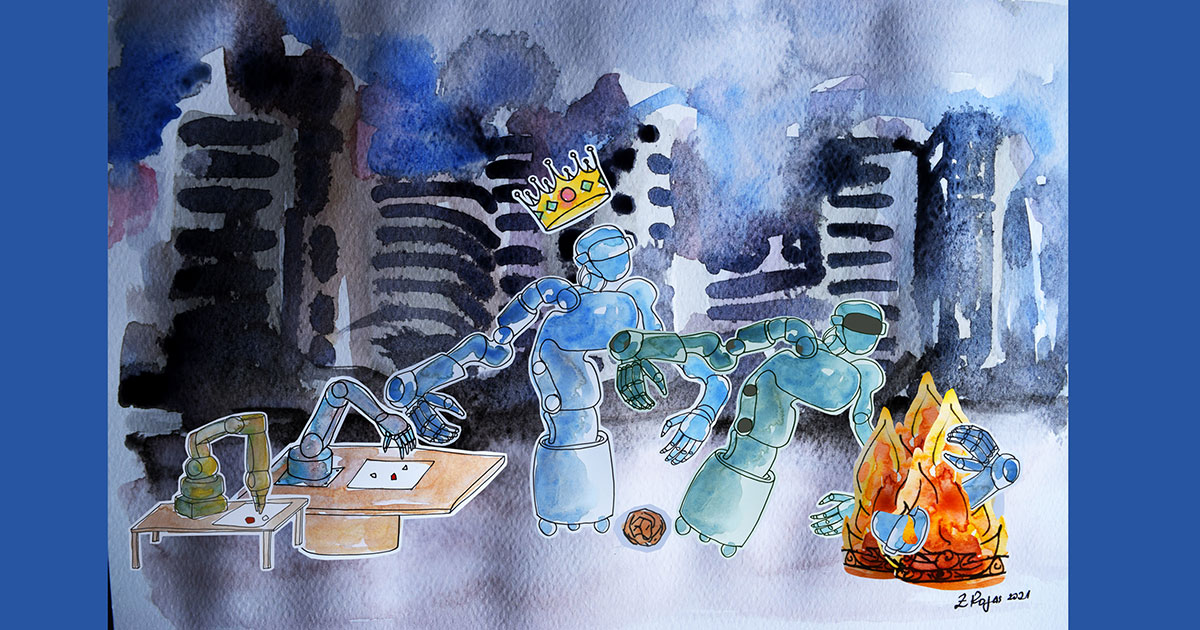LET’S DO LUDDISM
★ ★ ★ ★
[MACHINE] LEARNING TO FLY

By Cory Massaro
Technocratic propaganda since the Industrial Revolution has held that automation will birth an age of unprecedented leisure. In such a happy world, one might imagine the people saying,
“I hope a robot takes my job so I can play my flute!”
Yet economic policy has instead allowed the fruits of this automation to cling to the owning class, depressing wages (despite rising productivity) and keeping workers worldwide in ever-more-desperate states of wage- (or just regular) slavery.
Mood: “Oh, no, a robot took my job! How will I eat?”
Lately, though, it seems that robots only want certain kinds of jobs. They want to be doctors, lawyers, engineers—you know, something respectable.
Mood: “That robot can shop at the fancy store because it went to college.”
So how did robots come to command higher wages than humans?
Consider a pretty run-of-the-mill industrial robotic arm, Rethink Robots’ “Baxter.” This arm, according to one estimate, costs about 4.00 USD per working hour over its serviceable lifetime. This is already more expensive than human manual labor in many places. For example, in Wrocław, Poland, an Amazon fulfillment center worker can expect to make between 15.00 and 16.00 PLN an hour (per Glassdoor). This works out to between 3.70 and 3.95 USD, just shy of the 4.00 USD/hour that robot arm would cost.
Further, when we imagine the cost of automating manual labor, we must consider that even today’s cutting-edge artificial intelligence is not capable of the kinds of sophisticated sensory and motor tasks which humans find trivial. Look here, at this strainingly upbeat article about Google’s “arm farm”; behold in the embedded video the armpit-less arms’ pitiable struggles against physical form. We must consider the massive initial investment in developing an AI which can do everything a warehouse picker or factory worker or fence painter does; we must consider the cost of sensors, the expensive parallel processors that would allow such an AI to learn and function.
Surely though, “free market” competition will eventually produce an affordable robot? As of this writing, the economy finds itself amidst a semiconductor shortage and is weathering a strained supply chain. Most modern electronics incorporate rare earth metals, whose increasing scarcity will raise costs; likewise, issues like climate change and a worldwide geopolitical turn toward isolationism seem poised to impact trade still further. All this while human wages stagnate.
And in fairness, the rising cost of electronics should be a good thing—after all, the artificial affordability of consumer electronics has historically depended on slave labor and environmentally pernicious extraction practices—but, for the purposes of this writing, it just means that robots aren’t likely to replace human physicality anytime soon.
So, while machines won’t learn to fly like birds (at least in the near future), they are very close to flying like pilots. Indeed, while robots fail laughably at “unskilled” (read: manual, blue-collar) jobs, they seem to excel at stealing the jobs of “skilled” “knowledge” workers and trained professionals. Diagnostic expert systems can identify many diseases as accurately as human doctors; a legion of startups is out there running robot apprenticeship programs for careers in medical coding, HR, day trading, and property management. To return to the Amazon fulfilment center, the Beckettian urform of labor-to-come, the machines have already replaced white-collar work. There, automated systems make hiring, firing, and logistics decisions: they have taken the middle managers’ jobs.
And when machines do need to emulate our senses, they can simply hire us to teach them, like a wealthy family taking on a tutor for their child. Indeed, combined with the ruthlessness of owning-class humans, machines can avail themselves of this tutelage for free, like that time Google representatives tricked homeless Black people into producing data for facial recognition algorithms.
An analogy. Human beings evolved and developed in a physical environment. Human brains manage kinetic problems; they are the bridge among our dexterity and percipience and strength. Machine intelligence is being born and evolving in a decontextualized, disembodied, sterile morass of data. Its environment comprises not trees and predators and food, but insensible vectors of numbers. The machines’ senses are just inputs to functions; their bodies are a few digits written to a text file. For them, the right and wrong answers of data sets are divine truth—a kind of impossible Catholic standard they can never live up to—and nothing else is real.
Given the long, unfair labor history that has produced categories like “blue-collar” and “white-collar,” we should not be surprised at machines’ social mobility. Economically, the robots are indeed learning to fly. But we humans can still flap our arms. And hopefully, if we are good Luddites, we can learn to flap them in unison, energetically, while wielding crowbars and screwdrivers.

* * *
THE LUDDITE BESTIARY (A COLUMN WITHIN A COLUMN)
The BezosHive:
A community of insects made of hard plastic. A BezosHive can usually be found in small towns. The plastic insects flit from home to home, pollinating porches with cheaply-acquired consumer goods. Over time, the BezosHive will consume all resources in the surrounding area, causing many buildings to be abandoned and, eventually, colonized to form new BezosHives.

Cory Massaro is a native of Ohio, U.S.A., now at home in Quito, Ecuador. He spends his time learning languages, writing, playing music, coding, and propagandizing. He actively opposes materialism, consumption-as-cultural mandate, and all forms of hegemony. He is in favor of small, robust communities and gently destroying hierarchies wherever he goes. His fiction and poetry draw on the grievances he has stored in his heart since working in technology; his dearest hope is to predict accurately how egalitarian, worker-centered societies will revive the oral tradition to weather the climate wars.
























0 Comments